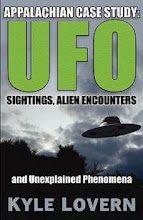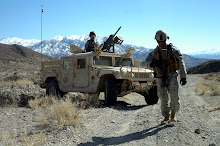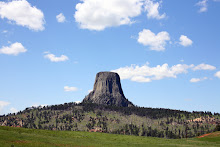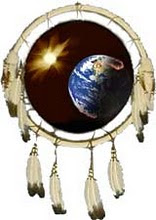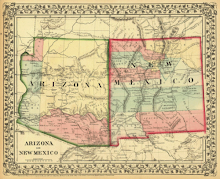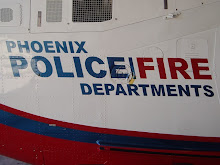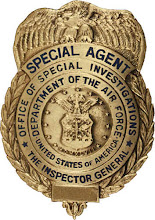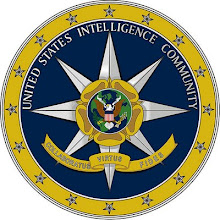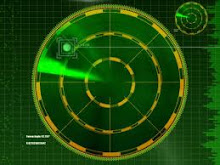Friday, November 15, 2019
Leverage US resources to understand unknown objects encountered by Navy, defense expert says
By Steve Hammons
All hands on deck! It’s going to take a team effort for the U.S. to deal with a very unusual situation involving “unidentified aerial phenomena (UAP)” that might be a serious threat – or something else, according to a national security expert.
In May 2019, a U.S. Navy spokesperson stated, "There have been a number of reports of unauthorized and/or unidentified aircraft entering various military-controlled ranges and designated air space in recent years …”
This quote is presented by national security veteran Christopher Mellon at the beginning of an article he wrote June 29, 2019. The article, or report, titled “Potential Sources of Information Regarding Unidentified Aerial Phenomenon,” was included in an e-newsletter dated Nov. 12 and distributed Nov. 15 from the start-up "public benefit" company called To The Stars Academy of Arts and Science.
Mellon serves as national security affairs director and advisory panel chairman for the company and has a significant background in the U.S. national security community.
Mellon writes that, “… the U.S. Navy’s public recognition of the problem is an excellent first step towards mobilizing the military and the Intelligence Community to find answers regarding the identify of these vehicles and determine whether they pose a threat to the United States.”
Is it really the “first step” for the Navy, other military branches and our national security community? Movies, TV shows and books have told us many stories of a “UFO situation” emerging for the U.S. in the World War II era and the 1950s.
But if we examine Mellon’s comments more closely, he specifies that the Navy announcement is a good first step “towards mobilizing the military and the Intelligence Community to find answers …” He seems to want to expand size and scope of the U.S. personnel and resources that probably have already been working on this issue for several decades.
UNKNOWN OBJECTS INCREASE UNPRECEDENTED
As has been reported in news stories over the past two years, the U.S. Navy has encountered and tracked multiple unusual unidentified objects near aircraft carrier strike groups at sea off the west and east coasts, and elsewhere, over a number of years.
Mellon provides some words of concern. “The UAP phenomenon off the East Coast of the US in recent years is unprecedented in terms of the number and appearance of the vehicles involved as well as their persistence in a specific geographic region.”
There seems to be a certain urgency in Mellon’s message. “It suggests not only a new level of brazenness or contempt for US defense and intelligence capabilities, but also the possibility that operations have advanced to a new stage towards some as yet unknown objective.”
The phenomena is not new, he acknowledges. “There have been numerous instances over the years of UAP intrusions over military facilities, some which I can personally attest to or am aware of with one degree of separation,” Mellon wrote in his article.
“For example, in March of 1984, a close friend who was training to become a naval aviator called me excitedly from Pensacola NAS [Naval Air Station] to relate an event involving a UAP flying circles around a USN aircraft in broad daylight over the base.”
“Numerous incidents involving UAPs and military facilities have been reported by retired military personnel and validated via the FOIA process. These reports include verified UAP overflights of nuclear weapons and nuclear storage facilities,” Mellon pointed out.
“Consequently, a review of these cases might help shed important new light on the question of reported UAP interest in the US strategic triad and nuclear chain of command (Note: I have not listed undersea monitoring capabilities due to classification issues although they are obviously highly pertinent to this question).”
Wrapping our minds around the situation may be difficult but necessary, Mellon counsels us. “The UAP issue is already uniquely challenging. It lacks recognition or understanding; it lacks acceptance; there is a serious stigma to overcome …”
We should increase our preparedness and readiness on several levels, he says. This includes our psychological and emotional preparedness and readiness, Mellon seems to say when he writes, “… and even more difficult is the deceptively serious challenge of helping government officials and the public process such incongruous, disorienting, disruptive and potentially disturbing information.”
“Finally, if these are vehicles created by another species there is the wholly unprecedented challenge of seeking to study an intelligence greater than our own that apparently does not wish to communicate or be understood.”
So what the heck is going on? Mellon doesn’t claim to know, or doesn't say – but does state, “To even stand a chance of success in this scenario it seems trite to suggest that we need to draw on all pertinent information available and apply the best and brightest analytical minds available.”
He may not have all the answers for us, but Mellon appears to have some worthwhile questions:
- “Are different kinds or types of vehicles associated with different locations, time-frames or types of targets? If so, are we possibly dealing with multiple, potentially even competing actors?”
- “Is there a pattern that suggests an ongoing effort to monitor the US strategic triad or nuclear command and control?”
- “Is there a pattern that suggests an effort to monitor US weapons development and deployment?”
- “Is there a correlation between advances in US technology and the presence of UAPs?”
COUNTERMEASURES USING EXISTING RESOURCES
In his article, Mellon also explores U.S. government assets that he believes could be used to respond to the UFO and UAP situation. He indicates that these efforts are inadequate and he lists several national security resources and systems that he says could be helpful.
If there have been classified and special activities related to this situation, Mellon seems to believe that these can be strengthened by additional resources and personnel.
Referring to the vast national security systems of our country, he writes, “Hopefully, the US officials charged with investigating the UAP phenomenon will receive the support needed to access and analyze data from these and other sources.”
And again referring to coordinating and making use of existing defense resources, Mellon states, “Since billions have already been spent collecting the information, it seems wasteful and inappropriate not to allocate whatever modest sums may be required to help to resolve vital questions regarding the origin and capabilities of the unidentified vehicles that continue to violate US airspace with impunity.”
Mellon wrote, apparently to the best of his knowledge, that, “Because this phenomenon has only recently been acknowledged, little if any effort has been made to use ‘national technical means’ for purposes of identifying or tracking these objects.”
He says certain existing U.S. capabilities can be utilized for analysis of previous UAP incidents as well as ongoing and future encounters, and provides the following lists as well as additional details:
Collection Systems:
- The Global Infrasound Acoustic Monitoring Network: Mellon describes the system as “comprised of 60 stations operating in 35 countries that monitor low-frequency pressure waves in the atmosphere.”
- The U.S. Space Surveillance Network “consists of at least 29 distinct world-wide space surveillance systems, including the world’s most powerful radars …”
- The Space-Based Infrared System (SBIRS) “is a network of satellites in low-earth, highly-elliptical and geosynchronous orbits that together provide nearly continuous global coverage of infrared (heat) sources,” Mellon noted.
- Active Electronically Scanned Array (AESA radars). He explained that, “In addition to the Navy’s Aegis radar systems, all military platforms outfitted with AESA radars are potentially valuable sources of information …”
- Aegis radar: “We know from the Nimitz incident that the Navy’s Aegis radar systems are capable of tracking low radar cross-section UAPs that operate at extreme altitudes and velocities,” Mellon writes.
- The Joint Surveillance System links the FAA’s long-range radar systems to the North American Aerospace Defense Command (NORAD), he explained.
Databases:
- “NORAD maintains a database called the ‘Unknown Track Reporting Database’ and/or ‘Unknown Track Reporting System’,” Mellon wrote.
- “Air Traffic Controllers (ATC) who staff the Federal Aviation Administration’s (FAA) airspace management sites (airports, alert centers, etc.).”
- “OPREP-3 Reports [operations reports] are an additional source of information distinct from NORAD aerospace defense reporting. This system is used by all branches of the military to report ‘urgent’ and ‘ongoing’ events to higher echelons,” according to Mellon.
And yet more assets can be brought to bear on these UAP challenges, he claims. As “other potential opportunities” to bring together robust resources, he includes the following:
- Allies
- ELINT/COMINT [electronic intelligence, communications intelligence]
- HUMINT [human intelligence]
By leveraging these capabilities and assets wisely, we can improve our preparedness and readiness for future developments, Mellon advises us.
(Related articles “Storytelling affects human biology, beliefs, behavior” and “Reagan’s 1987 UN speech on ‘alien threat’ resonates now” are posted on the CultureReady blog, Defense Language and National Security Education Office, Office of the Undersecretary of Defense for Personnel and Readiness, U.S. Department of Defense.)
Subscribe to:
Comments (Atom)


















































